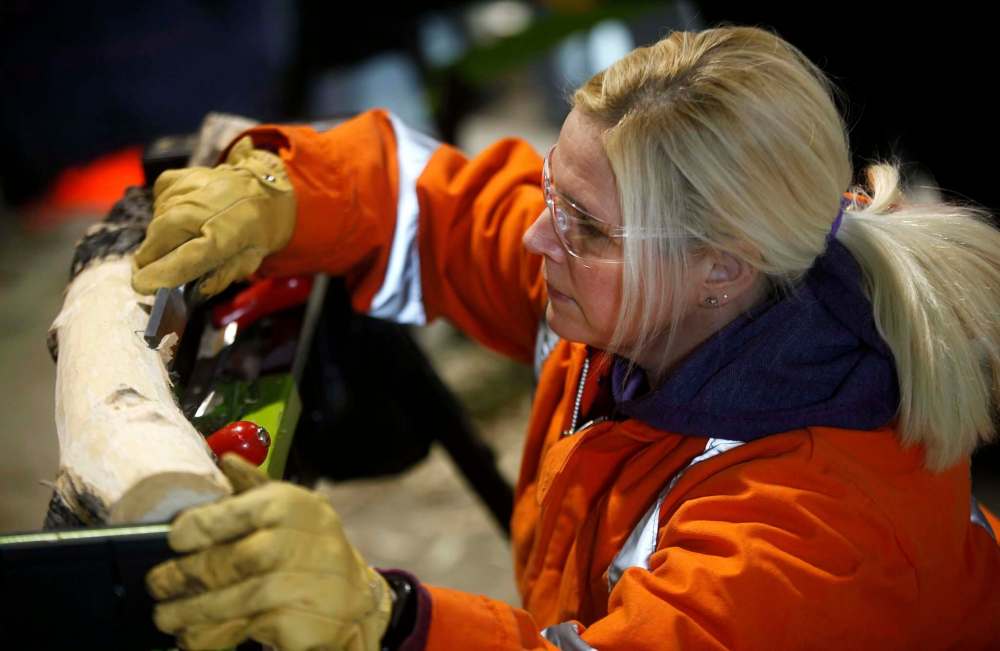City declares war on invasive tree beetle
Cold temperatures hinder tiny predator that threatens to wipe out Winnipeg's ash canopy
Advertisement
Read this article for free:
or
Already have an account? Log in here »
To continue reading, please subscribe:
Monthly Digital Subscription
$19 $0 for the first 4 weeks*
- Enjoy unlimited reading on winnipegfreepress.com
- Read the E-Edition, our digital replica newspaper
- Access News Break, our award-winning app
- Play interactive puzzles
*No charge for 4 weeks then billed as $19 every four weeks (new subscribers and qualified returning subscribers only). Cancel anytime.
Read unlimited articles for free today:
or
Already have an account? Log in here »
Hey there, time traveller!
This article was published 16/01/2018 (2303 days ago), so information in it may no longer be current.
That woodpecker in your ash tree may be tapping out an SOS. But even the loudest woodpecker can’t save a tree infected with the emerald ash borer, local experts say.
Woodpeckers eat the grubs of the tree-killing beetle, so spotting one at work may be a sign of infestation. However, by the time the birds find the borer grubs, it’s usually too late.
“This time of year, you can look for increased woodpecker activity. It’s tough to detect. If (people) suspect their tree has emerald ash borer, they can call the city’s 311 and we will dispatch a forestry technician or an entomology technician to go out and look at the tree,” City of Winnipeg forester Martha Barwinsky said on Wednesday.

The city’s insect and forest experts have doubled down on training to track the destructive green beetle’s spread since it was first spotted at the end of November.
Barwinsky has been preparing for such an onslaught for a decade, ever since the beetle, originally from China, started eating its way through ash forests in southern Ontario.
Last year, it was spotted as far west as Thunder Bay, likely a hitchhiker on a vehicle or carried in with a batch of infested firewood.
Barwinsky said the invasive insect’s arrival in Winnipeg was inevitable — and Wednesday showed how the city will defend itself, opening the doors of a garage at the Waverley Street insect-control branch to media to show homeowners what to watch for.
Tracking traces of the beetle involves painstakingly planing off infected tree bark to reveal serpentine tunnels, called galleries, where larvae invade, feast, move and grow until they exit the tree through a distinctive D-shaped exit the width of a matchstick.
A team of Natural Resource Canada experts are in Winnipeg training some 30-odd forestry and insect control scientists and technicians. The goal: “Hopefully, we’ll preserve a portion of our ash population,” Barwinsky said.
Ash trees make up 40 per cent of Winnipeg’s urban forest and the canopy is worth close to $437 million, a huge hit if it’s lost.
Winnipeg may have an advantage over other cities in Canada that have fallen victim to the scourge.
“One thing in Winnipeg’s favour is the cold temperatures. We have a couple of research projects we’ll start in Winnipeg,” said Krista Ryall, a forest ecological entomologist and head of the federal government team of experts that’s visiting Winnipeg.
Ryall said it’s possible the city’s recent deep freeze could kill some of the beetles before they become adults, and likely slow down the rest of them.

“It’s very cold here in the winter, and you might have larvae that are more susceptible to the cold. That might kill off a lot of them,” she said.
In the end, the final solution might be replanting ash with new species — an option Barwinsky said homeowners should consider now that the beetle presence is confirmed, as two out of every three ash trees in the city are on private property.
“Definitely, if you have ash trees on your property, consider planting trees now, if you have the space. There can be challenges planting a new tree beside a mature tree that will have to be removed, (so) don’t make the removal that much more difficult. But consider… do you have room for new species?”
And she had a few words of warning of what to expect over the coming weeks and months:
“Management options, what we’re looking at in the city of Winnipeg, is a combination of removals and tree injections,” the forester said.
The emerald ash borer, native to China, attacks all species of ash trees, decimating them.
Its first known Canadian infestation was in Windsor, Ont., in 2002.
It has since spread across southern Ontario, east to Quebec City and south through some 25 American states.
“In Ontario, what we see typically is up to 99 per cent or more of the trees are dead. It spreads a couple of kilometres a year, that would be a rough estimate,” Ryall said.

That was before cities, such as Montreal, started managing the infestation with systemic insecticides and selective harvests.
“But it’s still spreading. It’s getting worse at a slower rate,” she said.
This week’s work training Winnipeg and Manitoba scientists and technicians will see everything learned from the rest of Canada passed on to people here.
“We hope to find trees that are infested, we haven’t yet, but that’s our hope this week. That we find something,” Ryall said.
“There’s a high probability we’ll detect it if it’s there, so we’re starting around the known infested area and radiate out from there.”
alexandra.paul@freepress.mb.ca
History
Updated on Wednesday, January 17, 2018 5:16 PM CST: Fixes number in headline and body.
Updated on Thursday, January 18, 2018 7:55 AM CST: Adds photos
Updated on Thursday, January 18, 2018 1:00 PM CST: corrects typo



